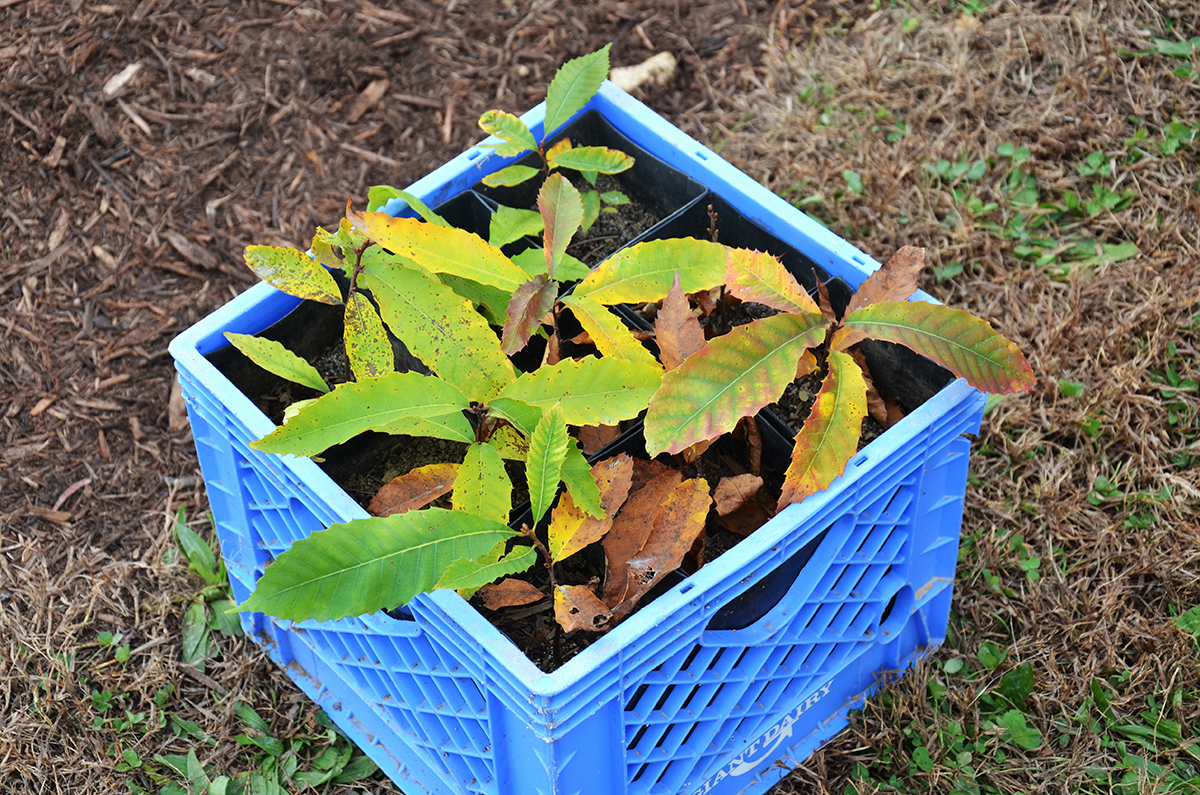Knauss legislative fellowships in Congress help build careers — and they're fun and educational. See our video and fact sheet for details.
The American Chestnut: From Dominance to Destruction
School:
Carroll County Public Schools, Maryland Sea Grant and University of Maryland ExtensionLesson Summary

Photo: American chestnut seedlings prepared for school grove plantings, fall 2015. J. Adam Frederick
Prior to 1900, American chestnuts (Castanea dentata) and oaks predominated in over 200 million acres of forest from Maine to Florida and as far west to the Ohio Valley. Within 60 years after the introduction of disease (blight) an estimated 40 billion American chestnuts were wiped out. In this series of lessons, students will identify different species of chestnut trees through observations of physical characteristics and learn about taxonomy. Through an interactive mapping activity using ImageJ software students will describe the impact of blight on the American chestnut population. An individual/group presentation on the impact of invasive species on the environment is the focus of the summative evaluation.
Background information about the American chestnut:
Teacher references:
Synthesis of American chestnut (Castanea dentata) biological, ecological, and genetic attributes with application to forest restoration by Douglass F. Jacobs, Harmony J. Dalgleish, C. Dana Nelson. Posted with permission from D.F. Jacobs, 9/2/2015.
A New Generation of American Chestnut Trees May Redefine America's Forest by F. Jabr. Scientific American Vol. 310, Issue 3, Web Exclusives.
American chestnuts rise where other trees failed to make a stand by Leslie Middleton. Bay Journal, October 28, 2015.
Student references:
A New Generation of American Chestnut Trees May Redefine America's Forest by F. Jabr. Scientific American Vol. 310, Issue 3, Web Exclusives.
Synthesis of American chestnut (Castanea dentata) biological, ecological, and genetic attributes with application to forest restoration by Douglass F. Jacobs, Harmony J. Dalgleish, C. Dana Nelson. Posted with permission from D.F. Jacobs, 9/2/2015.
Driving Questions
- How are interactions among different organisms important to the environment?
- How do changes in environmental conditions affect organisms?
5E For This Lesson Plan
Engagement
Engagement
This activity captures the students' attention, stimulates their thinking, and helps them to access prior knowledge.
Getting to Know a Forest Icon
Students will:
- Describe the ecological and societal values of American chestnuts in the United States.
Exploration
Exploration
In this section students are given time to think, plan, investigate, collect and organize information.
Epic Invasion
Students will:
- Describe the impact of blight on the range of American chestnut population.
Evaluation
Evaluation
This performance-based activity helps students to connect all of the pieces of information involved in these lessons.
Invasive Investigation
- Review and edit the American chestnut graphic organizer and fill in gaps discovered during the lesson activities.
- Develop a storyboard or comic strip about another invasive species that has had negative economic and ecological impacts.
- Present storyboard/comic strip to peers.



